50 Years of Solar Eclipses from Space In Astronaut Photos
A View from Space
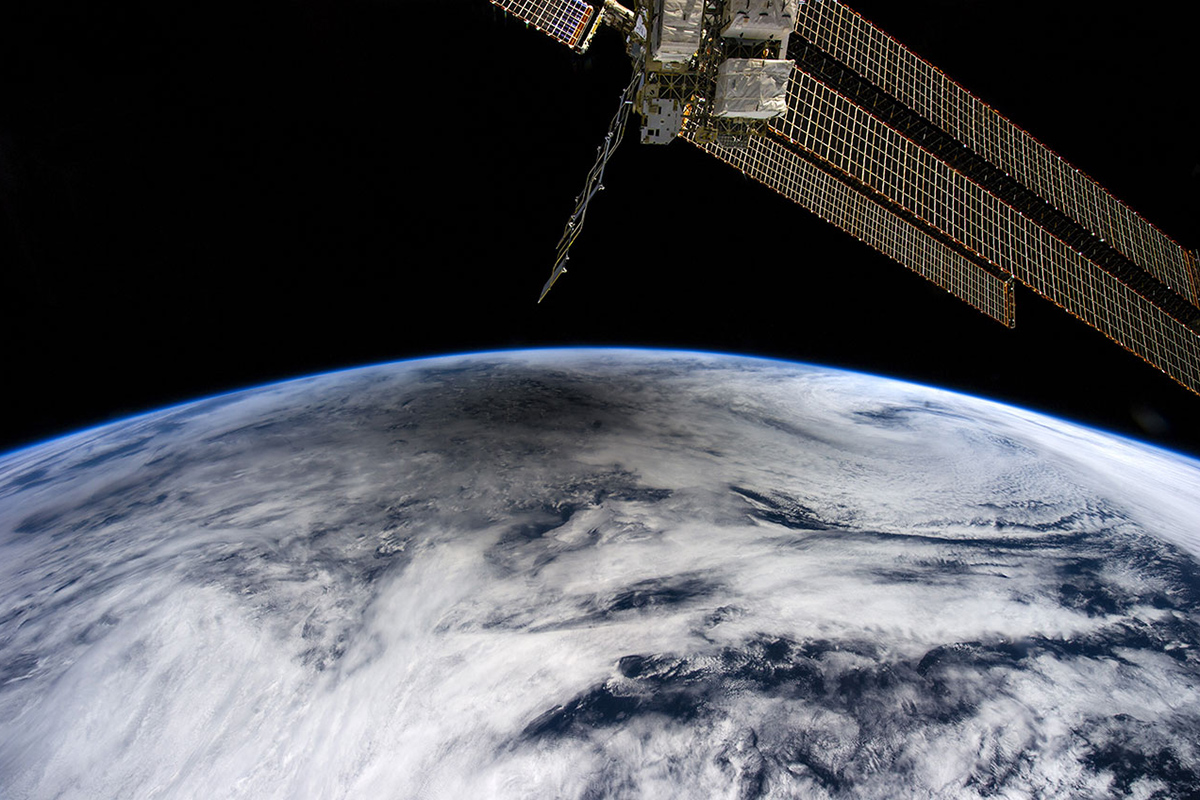
On Aug. 21, 2017, the crew on the International Space Station will join the small club of astronauts and cosmonauts who have viewed a solar eclipse from space. Unlike on Earth, where those in the path look up to see the moon pass in front of the Sun, astronauts and cosmonauts have the rare chance to see the full shadow of the moon as cast on the Earth. The brief history of eclipses seen from space span 50 years and multiple missions.
Gemini 12 in 1966
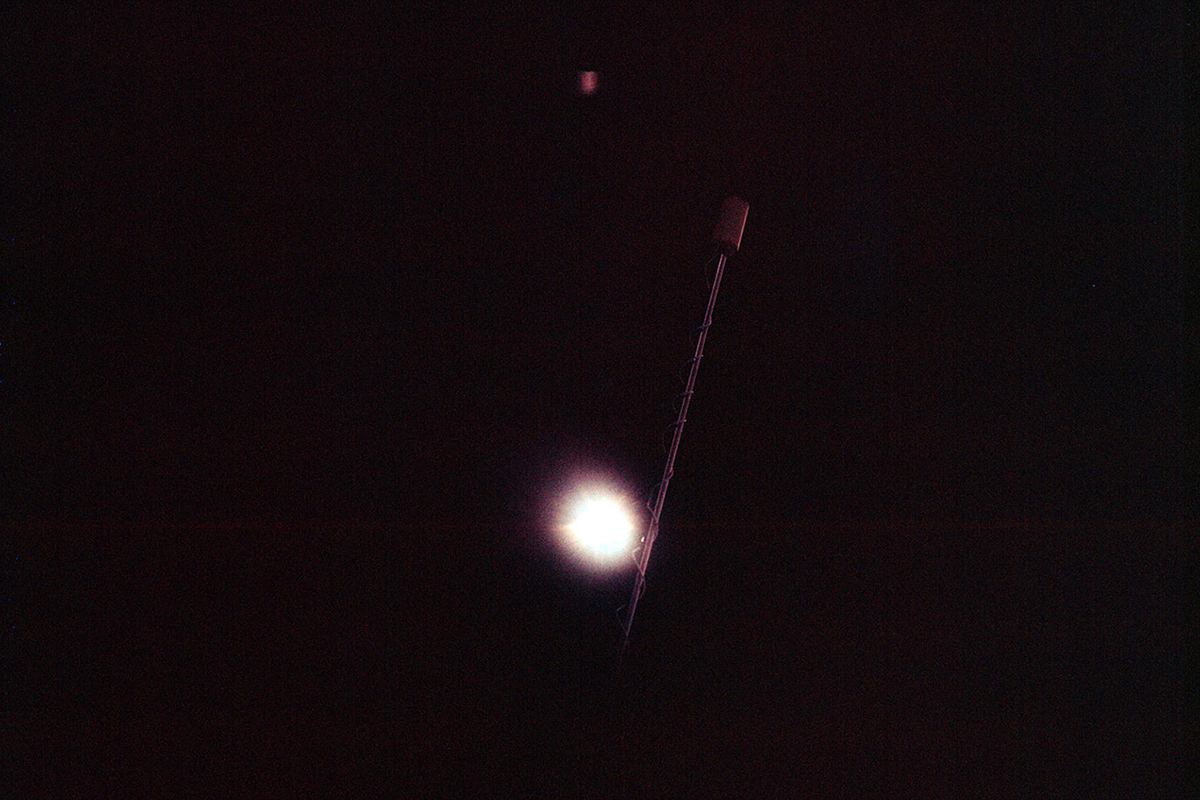
The first total solar eclipse seen from space, as photographed by Gemini 12 crewmates Jim Lovell and Buzz Aldrin on Nov. 12, 1966. The boom seen in the foreground is the antenna on an Agena target vehicle docked to the Gemini spacecraft.
Mir in 1999
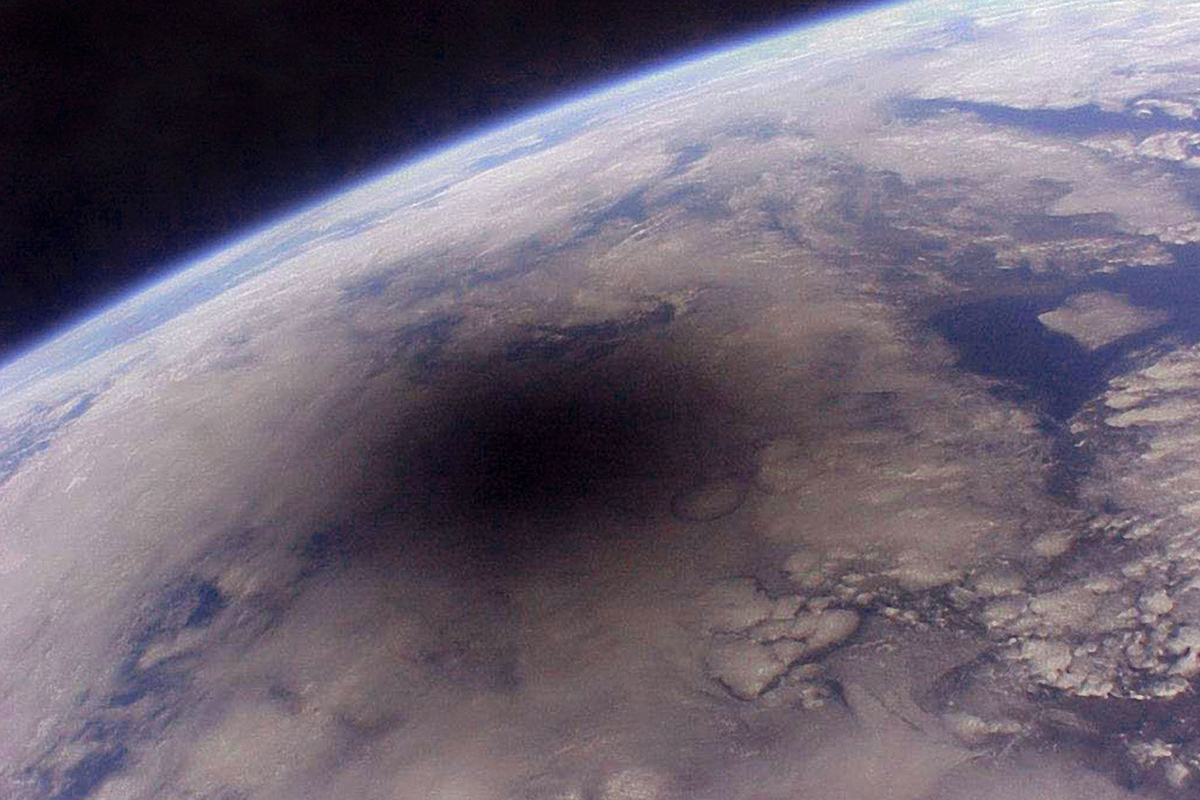
The first-ever astronaut's view of the moon's shadow cast on the Earth during a total solar eclipse on Aug. 11, 1999. The photo was taken by French space agency CNES astronaut Jean-Pierre Haigneré on board Russia's former space station Mir.
ISS in 2002

A re-boost of the International Space Station two days before the Dec. 4, 2002 total solar eclipse resulted in a distant view of the shadow on the Earth's horizon. This was NASA astronaut Don Pettit's first of two solar eclipses seen and photographed from space.
Composite from 2006
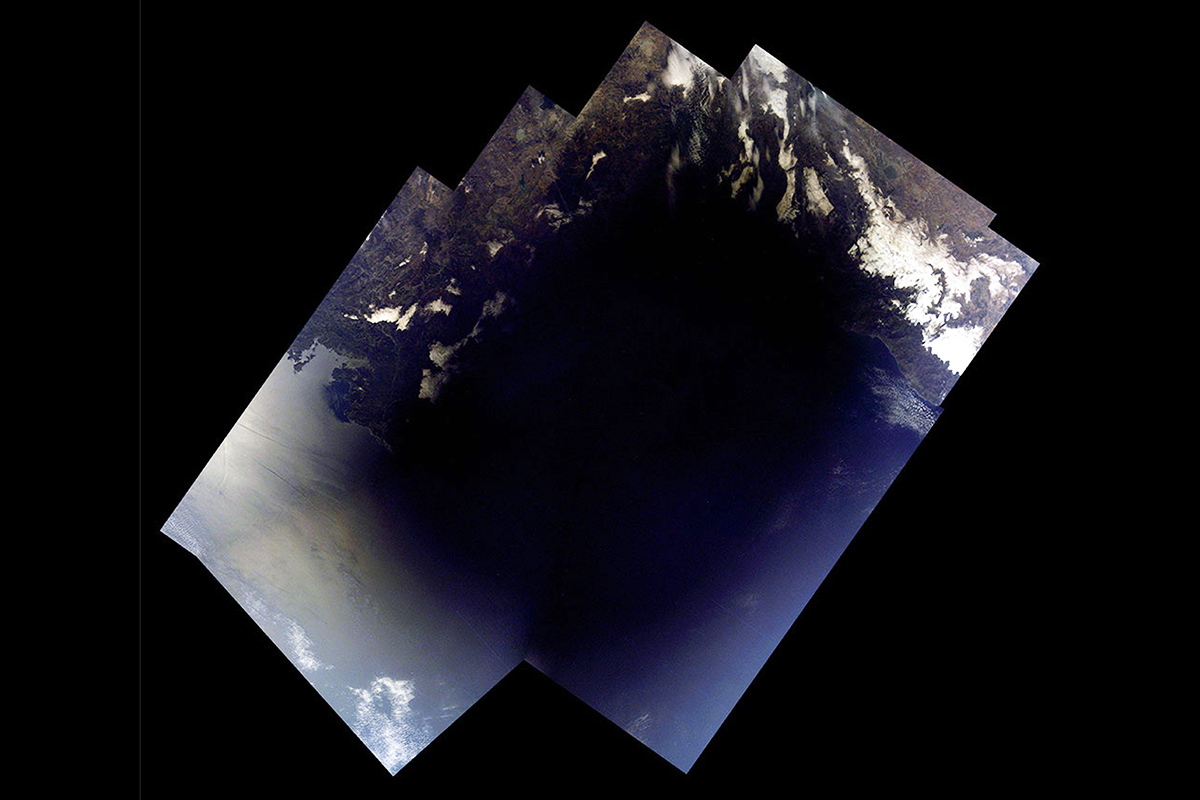
Composite image (mosaic) of the shadow cast by the March 29, 2006 total solar eclipse, as photographed by Expedition 12 commander Bill McArthur aboard the International Space Station.
Expedition 31 in 2012

NASA astronaut Don Pettit photographed his second total solar eclipse from space as an Expedition 31 flight engineer on the International Space Station on May 20, 2012. The space station's solar array wings can be seen in the foreground.
Expedition 43 in 2015
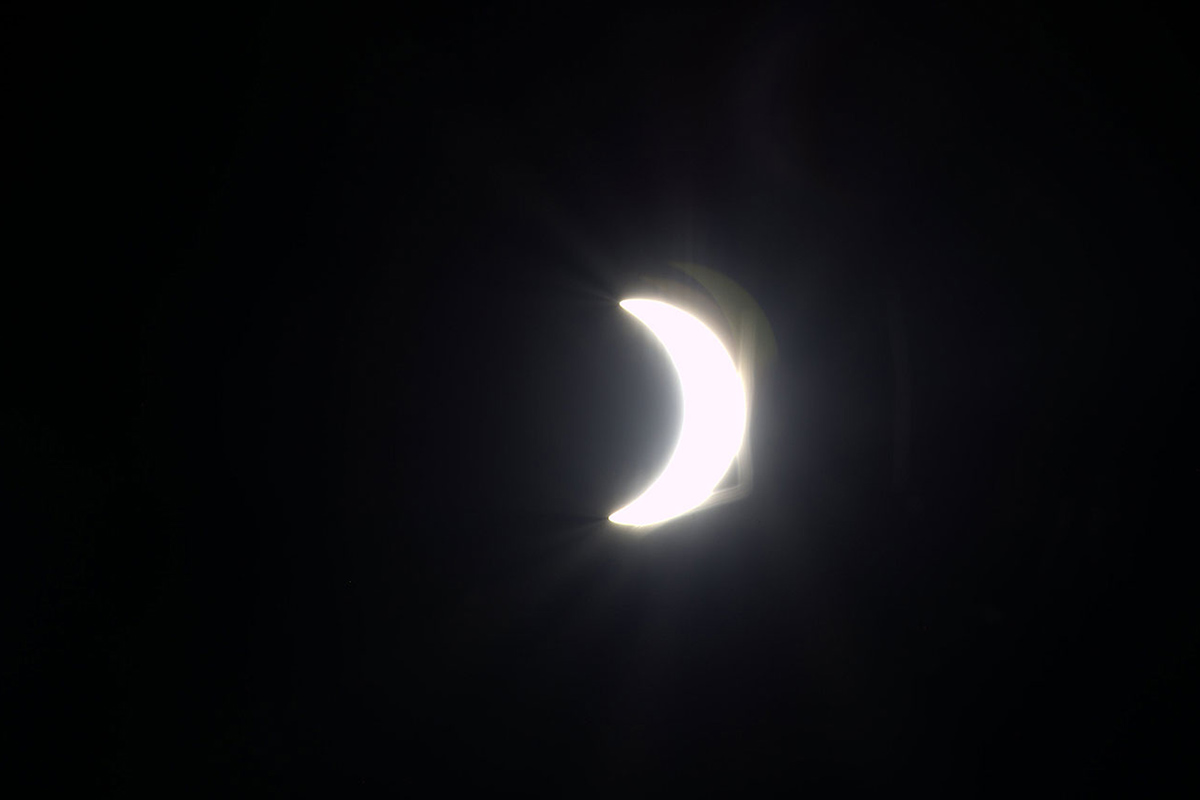
Expedition 43 flight engineer Samantha Cristoforetti took a series of photographs of the March 20, 2015 solar eclipse from the International Space Station. Cristoforetti wrote on Twitter, "Orbital sunrise and the #SolarEclipse... could it go any better?"
Get the Space.com Newsletter
Breaking space news, the latest updates on rocket launches, skywatching events and more!
Apollo 11 in 1969
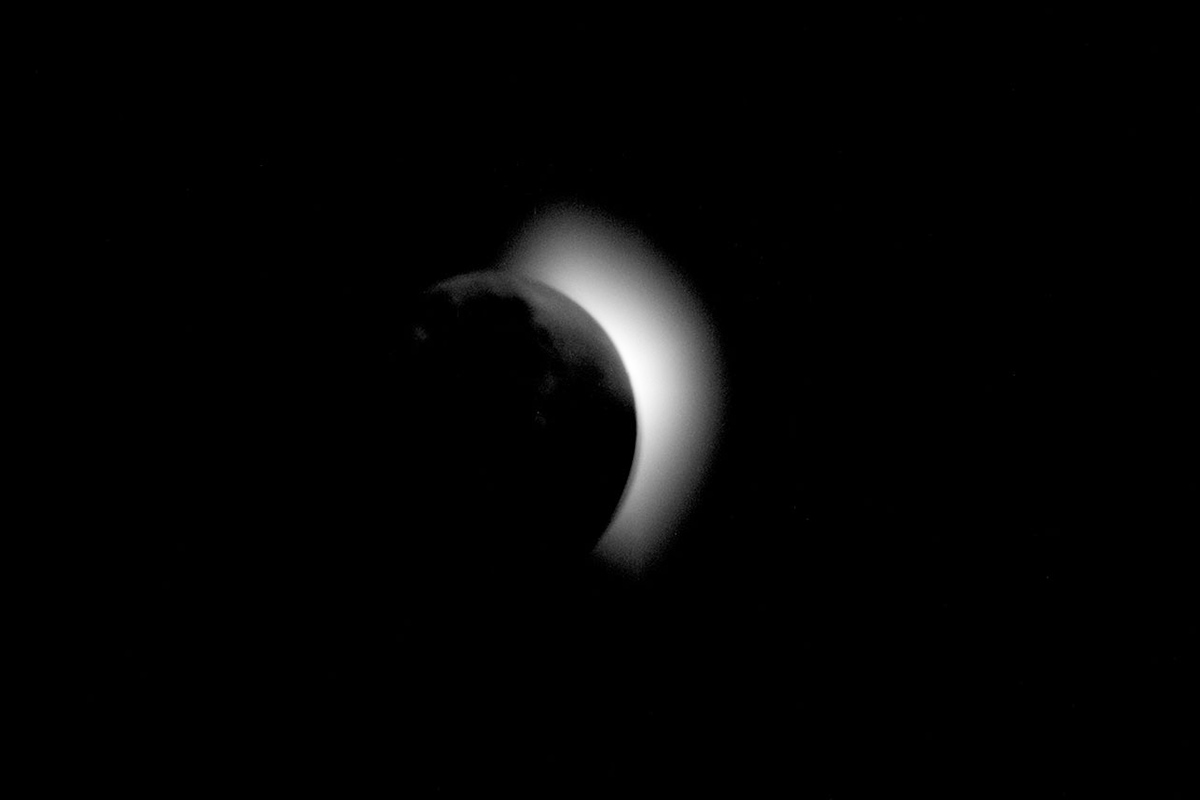
This photograph of the solar corona was taken by the Apollo 11 astronauts during trans-lunar coast and prior to lunar orbit insertion on July 19, 1969. The moon is the dark disc between the spacecraft and the Sun.
Apollo 12 in 1969
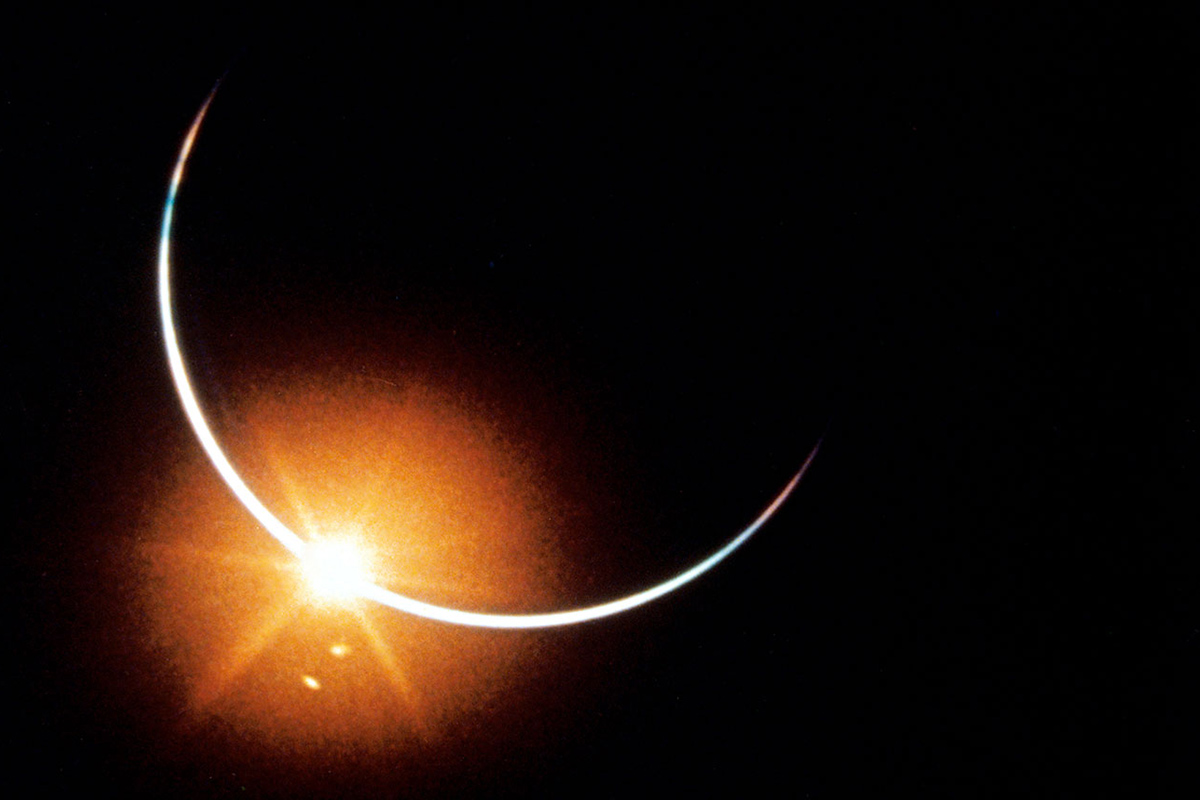
A total solar eclipse of a different type: this view was created when the Earth moved directly between the Sun and the Apollo 12 spacecraft on Nov. 24, 1969. The photograph was taken with a 16mm motion picture camera.
Apollo 12 Art
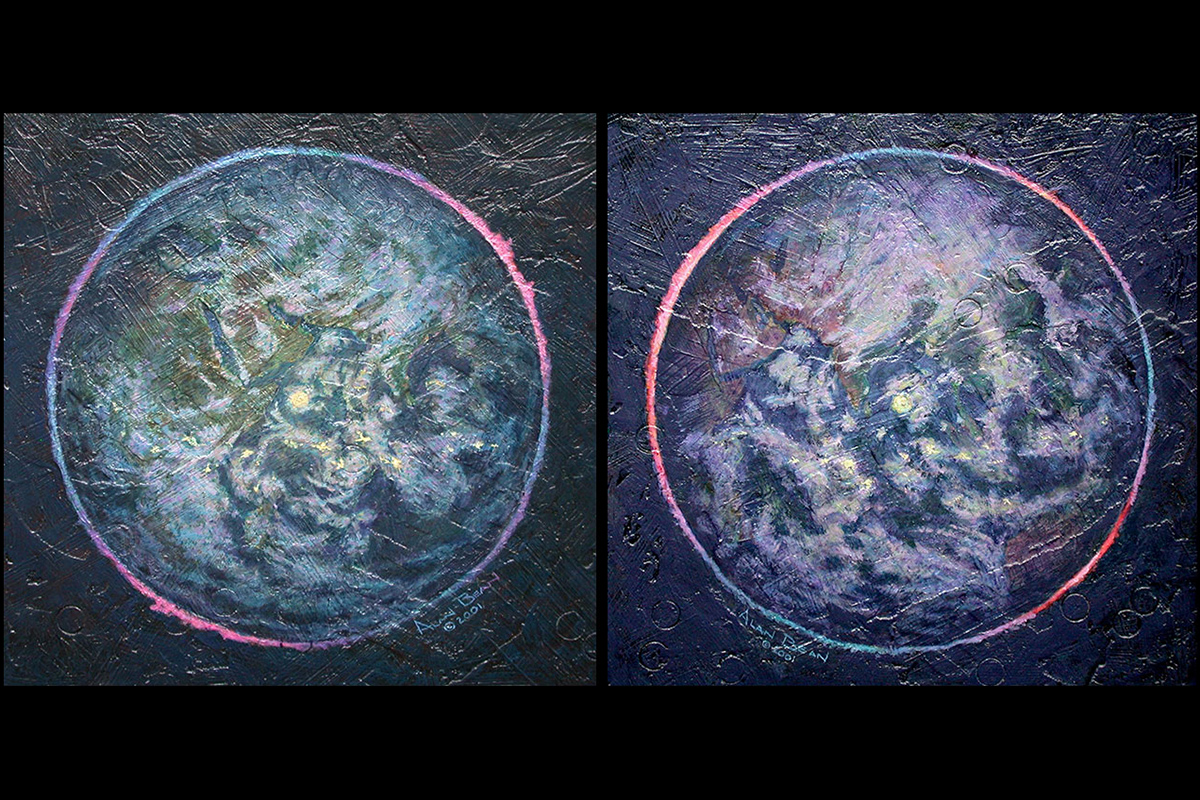
Alan Bean, who witnessed a solar eclipse aboard Apollo 12 and became a professional artist after walking on the moon, painted these two interpretations of "A Most Extraordinary Eclipse" — "Early Stages" (left) and "Late Stages" (right).
Man-made Eclipse

Still from a NASA promotional film describing the 1975 Apollo-Soyuz Test Project (ASTP) showing the Apollo command module being used to block the Sun so the cosmonauts aboard the Soyuz can photograph the solar corona.
Follow collectSPACE.com on Facebook and on Twitter at @collectSPACE. Copyright 2017 collectSPACE.com. All rights reserved.
Join our Space Forums to keep talking space on the latest missions, night sky and more! And if you have a news tip, correction or comment, let us know at: community@space.com.

Robert Pearlman is a space historian, journalist and the founder and editor of collectSPACE.com, a daily news publication and community devoted to space history with a particular focus on how and where space exploration intersects with pop culture. Pearlman is also a contributing writer for Space.com and co-author of "Space Stations: The Art, Science, and Reality of Working in Space” published by Smithsonian Books in 2018.In 2009, he was inducted into the U.S. Space Camp Hall of Fame in Huntsville, Alabama. In 2021, he was honored by the American Astronautical Society with the Ordway Award for Sustained Excellence in Spaceflight History. In 2023, the National Space Club Florida Committee recognized Pearlman with the Kolcum News and Communications Award for excellence in telling the space story along the Space Coast and throughout the world.










